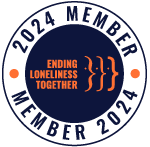This August we are focused on bone health. We know that people living with chronic conditions such as diabetes, heart disease, kidney disease and arthritis are at a higher risk of conditions such as osteoporosis and osteopenia. Osteoporosis is a condition that causes bones to become thinner and more fragile, making us more prone to the risk to fractures and falls. This is caused by a decrease in bone mineral density, also known as osteopenia. But there is something we can do to prevent this…
When looking to boost your bone health, there are three key elements to remember: intake of calcium, vitamin D and exercise.
Calcium is a mineral that is absorbed into our blood and is used for healthy heart, muscle, blood, and nerve function. Our bones act like a calcium bank. When do not have enough calcium in our diet the body will take what is required from our bones, and when this starts to occur our bone density gradually declines and increases our risk of developing osteoporosis. In terms of calcium intake, it has been stated that we should be aiming to include 3 – 5 servings of calcium rich foods in our daily diet. This includes dairy products such as yogurt, milk, and cheese. Other calcium products for individuals who dislike dairy or are intolerant include specific vegetables such as spinach, kale, sweet potato and broccoli, as well as fish and nuts.
Maintaining adequate exposure to vitamin D is critical for calcium absorption and additionally important for optimal bone health and muscle function. Regular and safe sunlight exposure is encouraged as this is the primary source of vitamin D. This can be done by going for a walk outside or socialising with our friends and family at the park. Vitamin D intake can also be increased through taking supplements.
Lastly, regular exercise and physical activity has been recognised as one of the most effective lifestyle strategies to maximize peak bone mass to prevent bone mineral loss with the effects of aging. The current recommended guidelines for exercise include at least 30 minutes of aerobic activity two to three times per week (e.g. walking, swimming, running). It is also important to include regular resistance (weight bearing) training at least two times per week, combining upper and lower limb exercises (e.g. dumbbell curls, squats, stair climbs).
Authors:
Ellie Lawson – UQ Exercise Physiology Student & Daniel Chen – UQ Exercise Physiology Student.
References:
https://onlinelibrary-wiley-com.ezproxy.library.uq.edu.au/doi/pdf/10.5694/mjao12.11363
https://healthybonesaustralia.org.au/your-bone-health/calcium/
https://www.betterhealth.vic.gov.au/health/conditionsandtreatments/osteoporosis-and-exercise
https://www.bones.nih.gov/health-info/bone/osteoporosis/overview


